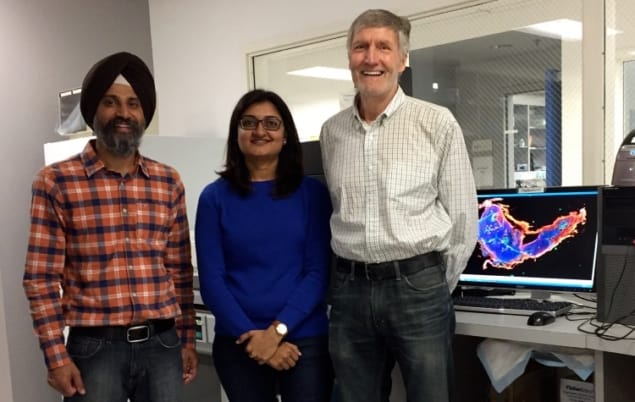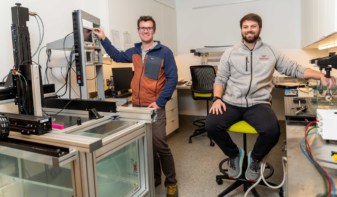
By studying breast cancer tumours in mice, Erkki Ruoslahtiand an international team of scientists have discovered important characteristics of non-responsive tumours that can help restore the targeting and therapeutic effectiveness of a nanoparticle-based cancer treatment.
Previously, the team discovered that this treatment was highly effective at disrupting blood vessels in breast cancer and glioblastoma models. However, tests on mice demonstrated that certain tumours were evasive and resistant to the therapy.
In their latest paper, the scientists compared differences in the vasculature (blood vessel make-up) of the tumours to understand this change in responsiveness. They identified a peptide that may make it possible to specifically target the treatment-resistant tumours (J. Controlled Release 268 49).
Nanoworms disrupt tumour vessels
Previous work by the California-based research team showed that functionalized iron-oxide nanoparticles are potent tumour disrupting agents. The particles, nicknamed nanoworms (NWs) due to their shape, consist of two peptides (the homing peptide GGKRK and D(KLAKLAK)2) that respectively target and disrupt the mitochondria of tumour cells. The peptides are displayed on the surface of NWs in large numbers (because the NWs are aggregates of many nanoparticles), which increases their activity.
By looking at responsive mouse tumours under a microscope, the researchers saw that NWs reduced blood vessels in these tumours by 75%. Most of the blood vessels in tumours that responded to treatment also stained positively for lectin (a membrane protein used to detect vessels with blood flow) and CD31 (an antibody used as a general blood vessel marker). However, resistant tumours showed a unique feature: many blood vessels were lectin-positive, but CD31-negative.
Further microscopic investigation indicated that some of the vessels in these tumours might be from human tumour cells, as opposed to the host mouse. However, the scientists found that NW accumulation in non-responsive tumour cells was greatly decreased, even though the homing peptide’s receptor was still expressed at the same level. This finding indicates that an alteration in both CD31-positive and CD31-negative blood vessels has occurred, limiting the homing ability of the nanosystem.
Screening resistant tumours
Since the tumours that are resistant to the NW homing treatment have altered blood vessels, the researchers hypothesized that a different homing peptide (not GGKRK) could restore NW treatment effectiveness.
After screening a phage-displayed peptide library in mice, and sequencing the peptides recovered from non-responsive tumours, the research team saw a high frequency of the RGD peptide, which is used in many different therapies to home in on tumours. This peptide targets integrins, specifically the αvβ3 integrin. As expected, the non-responsive tumours showed higher expression of the β3 integrin subunit than responsive tumours and had elevated expression of β3 mRNA.
Ruoslahti’s team showed that multiple pathways affect a tumour’s ability to resist the vasculature-disrupting NW therapy. Their results also suggest that by using combination therapies, for example NWs functionalized with both GGKRK and RGD peptides, scientists may be able to prevent the development of non-responsive tumours.
Finally, this approach, in which the molecular and cellular basis of resistance in non-responsive tumours was explored, could be applicable to the study of other cancers as well.



